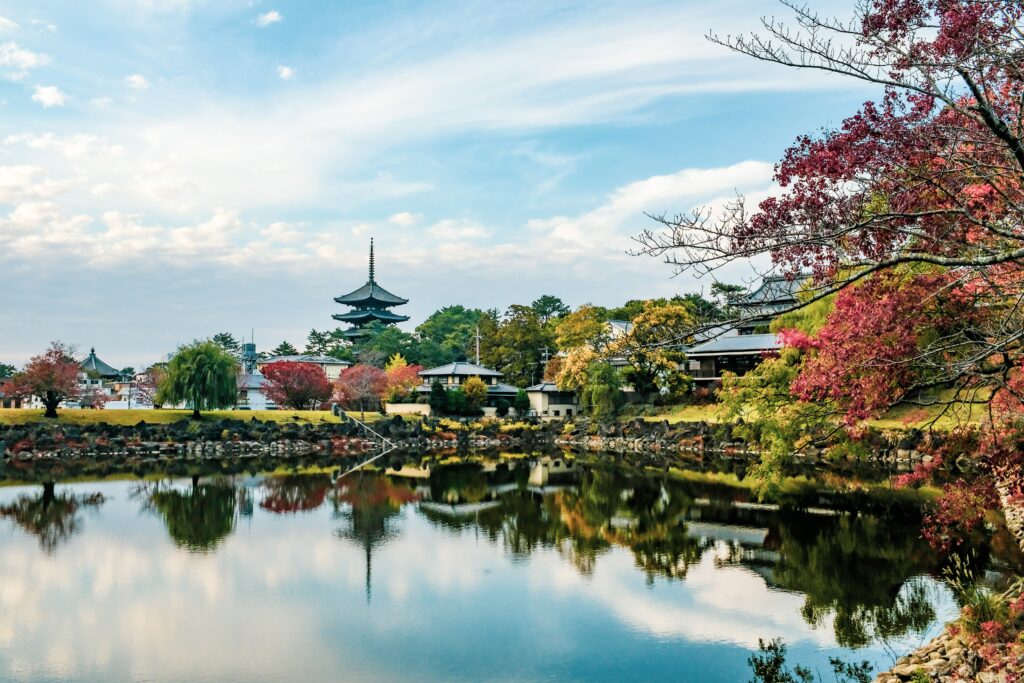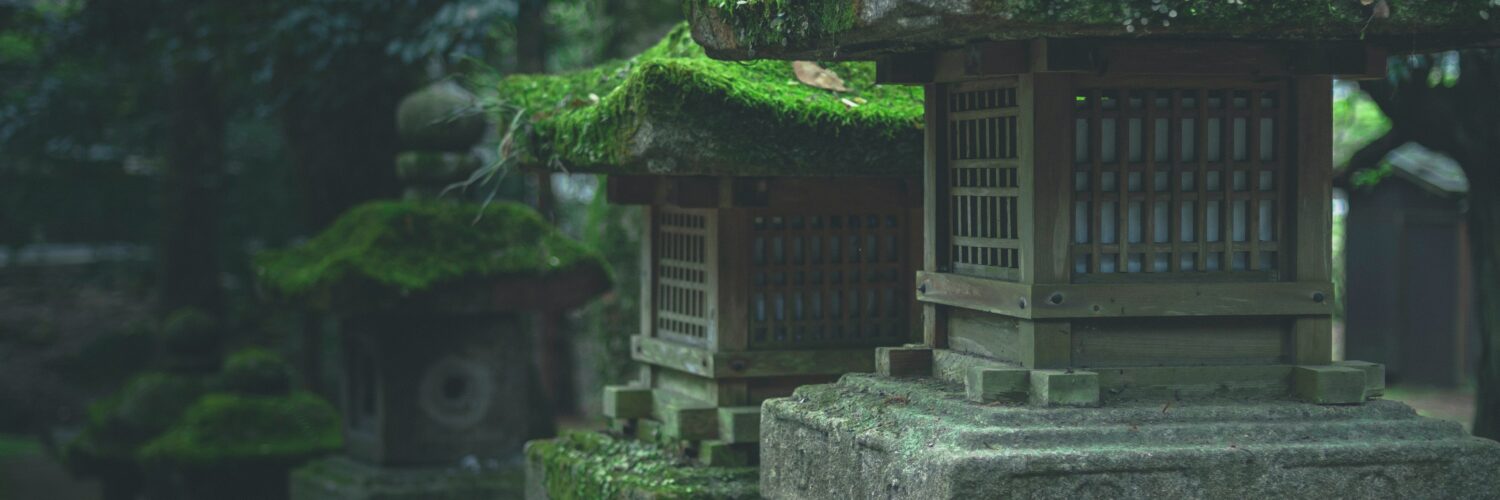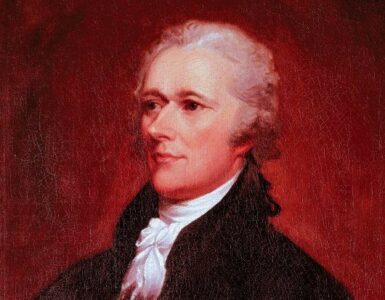Classical Japan was an era of civilisation that lasted over five centuries. Succeeding the Kofun period, Classical Japan began with the spread of Buddhism in the 4th century. Many changes were made to the Japanese society compared to its predecessor era, Ancient Japan. This includes renaming the country to what we know it as today – Nihon. There were also heavy influences brought over from China, such as the culture, dress style, language, and religion.
Many aspects of modern-day Japanese culture originated from the three periods during Classical Japan – Asuka, Nara, and Heian. Today, we shall discuss a little about each one of these periods, as well as their predecessor and successor eras.
Ancient Japan
Before the civilisation of Japan was the early history of Japan, also known as Ancient Japan. This era spanned thousands of years, starting from prehistoric times. Ancient Japan consisted of three periods – Jōmon, Yayoi, and Kofun.
So,So, how did Ancient Japan move on to become Classical Japan? As mentioned earlier, the Kofun period transitioned into the Asuka period in the 4th century. This was due to the spread of Buddhism from the Korean Kingdom of Baekje to Japan in 538 AD. As a result, Buddhism and Shintōism, the traditional religion of Japan, amalgamated and coexisted with each other.
Asuka Period
The Asuka period (飛鳥時代, Asuka Jidai) was the period marking the spread of Buddhism in Japan. During this period, which is from 538 to 710 AD, significant changes in Japan’s arts, society, and politics occurred. One of such changes includes the transformation of the name of Japan from Wa (倭) to Nihon (日本). Nihon continues to remain the name of Japan to this day.
During this time, the Yamato court established a central administration based on that of the Chinese. While the Yamato rule spread across most of Kyūshū and Honshū, the imperial court did not designate a fixed capital. With the Yamato court’s authority, the country was administered under the Gokishichidō system (五畿七道, Goki Shichidō), which divided the country into five provinces (Goki) and seven circuits (Shichidō). This is in contrast with the modern-day Todōfuken system (都道府県, Todōfuken) comprising of 47 prefectures.
With the intermarrying of the Soga clan with the imperial family, Empress Suiko was made the head of state. Under her was Prince Regent Shōtoku Taishi, a devout Buddhist knowledgeable in Chinese literature. With Shōtoku, The Japanese adopted Confucian values and Chinese systems. This included the Chinese calendar and the Gokishichidō system. This boosted the political ties between Japan and China.
Asuka Culture
Heavy focus on Buddhism was a part of the culture during the Asuka period. However, with the Yamato court practising Shintōism, this was met with some resistance. Regardless, the influence of Buddhism, together with that of Taoism, was seen widely in Japanese society. The emperor imposed a ban on livestock consumption and certain animals due to their religious beliefs.
One of Asuka’s most well-known buildings, Hōryū-Ji (法隆寺), are still around till this day. Many other aspects of the culture of this period exhibit traits from the Tang dynasty and the Goguryeo period of Korea. The first Japanese coin was also minted in 708, just before the Nara period.
Nara Period
A short period of Japan’s history, the Nara period (奈良時代, Nara Jidai) lasted only 84 years, from 710 to 794 AD. This was marked by establishing the first permanent capital of Japan in Heijō-Kyō in modern-day Nara prefecture. It was only moved permanently in 784 AD to Nagaoka-Kyō and subsequently to Heian-Kyō in 794 AD. Both Nagaoka-Kyō and Heian-Kyō lie within present-day’s Kyōto prefecture.

With the earlier-mentioned minting of coins, there was an increase in economic activities during the Nara period. It was also during this time where strong influences from China were imported back to Japan.
Nara Culture
There was a strong emphasis on Japanese literature during the Nara period. Aside from propaganda works, the Japanese poetry of Waka became popular. This was written entirely in Chinese characters, known as Man’yōgana.
While many regular Japanese continued the practice of Shintō, a number, especially those of the upper class, practised Buddhism. This continued after the spread of Buddhism during the Asuka period. The printing of a million Hyakumantō Daranis, which are prayer charms, also makes it one of the earliest printed products to exist.
Heian Period
As mentioned earlier, the capital of Japan was moved from Nagaoka-Kyō to Heian-Kyō. This signifies the start of a new period in Classical Japan – the Heian period. The Heian period (平安時代, Heian Jidai) existed from 794 to 1185 AD and emphasised the Japanese culture. This was followed by a decline in the influences from China due to political instabilities there during the 9th century. Kyōto remained the imperial capital of Japan for the subsequent millennium before it was moved to present-day Tōkyō.

There was a decline in the currency during this period, using rice for trade instead. This proved the incompetency of the Japanese rulers, eventually giving rise to shogun rule in Feudal Japan. However, the Heian period successfully sustained extended periods of peace in the country.
Heian Culture
Perhaps, one of the most important cultural events that happened during the Heian period would be the evolution of the Japanese script. Scripts such as Hiragana and Katakana emerged, allowing more less-educated women to engage in literature.
For some reason, the Japanese considered beauty to be what makes someone a good person. More peculiarly, their beauty standards are highly different from what we perceive beauty to be today. Aristocrats applied powder on their faces and made their teeth black.
That aside, remember how we talked about Hiragana and Katakana’s rise? After taking over from the Nara period, poetry continued to remain commonplace throughout the Heian period. This increased the amount of Japanese literature. New genres emerged, such as novels and Monogatari (物語), which are narrative stories. One of the most iconic aspects of Heian literature is the lyrics of Kimigayo. Kimigayo is the modern-day national anthem of Japan.
Feudal Japan
With the rise of the Minamoto family in 1185, the Heian period of Classical Japan came to an end. Minamoto no Yoritomo established the first military government of the country, with the start of the Kamakura period of Feudal Japan. The emperor became a puppet ruler of the shogunate, which remained till the Meiji restoration in 1868. While the government was moved to Kamakura in the Kantō region, the capital remained at Kyōto in the Kansai region.
Classical Japan brought about many changes, especially in the Japanese language, culture, and political activity. Many aspects of Japan today date back to the three periods of Classical Japan – Asuka, Nara, and Heian. This makes this five-century-long era significant in shaping Japan into what it is today.





Add comment